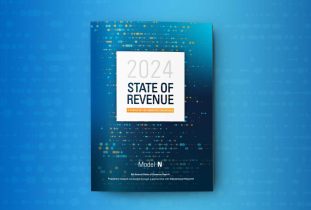By Cesare Rotundo, VP of High Tech Product Management
The 2021 AI/ML Approach and Results
When it comes to ML model definition, training, and testing, each of these problems requires the resolution of two key challenges:
- Selecting the right data dimensions
- Selecting the right algorithm to deliver a business response
Today’s ML tools enabled us to explore the entire dimensionality of data, and without breaking down dimensions into segments has allowed us to understand and define the right dimensions. The secret sauce is performing aggregation within some of the dimensions. For example, we quickly discovered that the part/SKU level was too granular, yet product families too aggregated. We had to define proxies to classify without generalizing. We identified 8 key cross-customer dimensions (including proxies) for Quote Win Probability and 9 for Expected Compliance that deliver the level of accuracy we need in our ML solution, which varies by prediction type. These include part, distributor, and end-customer, as well as metric-derived dimensions such as price deviation, and whether contracts or rebates are linked. It helps to be intimately familiar with both the business objective and the data!
The other key component in delivering an ML model is the algorithm. After all, ML is the process of solving a problem by algorithmically building a statistical model to work on a dataset: that’s how the machine learns! A search of “ML algorithms” returns lots of them, and several useful classifications that attempt to depict which algorithm works best for which problem, such as Scikit-learn. Experience can guide in the selection of the right algorithm, but ultimately what counts is the result or the accuracy of the model, so you can trust the “black box”. While more stable than the data dimension, algorithm selection goes thru an evolution process as well. The algorithm that delivered the best accuracy for Quote Win Probability is XG Boost, while Expected Compliance a Feed-Forward Neural network works best. However, we reserve the right to add new useful ones out of the box as needed!
Model N’s investment and passion in both ML and revenue management and pricing has yielded high accuracy and is providing business users with a variety of predictions rather than a single price to aim for – a toolbox to make better decisions, from different price point ranges to expected win probability and quantity compliance. It’s all available for you in 2021 because once you have the right model, ML can deliver accurate predictions by pointing to the entire dataset, without forcing you to predetermine segments like the approaches that were state-of-the-art a decade ago. After all, would you still want to shoot cannons when you can launch a missile?
What’s Next?
Today’s recipe is simple: use ML to help you make better and faster decisions. The target is process optimization: use the power of ML instant insights to increase the throughput and accuracy of processing business opportunities, increasing wins while improving margin. We’re serving you not only the “optimal price”, but also other information to help you assess opportunity and risk.
Optimizing current processes with ML is not a one-shot process. Current business processes need to be adapted to take advantage of information: once ML information is trusted, tuned, and internalized, workflows are changed to increase the auto-approval rates, filter, and route decisions more efficiently. As more predictions are delivered the process and workflows evolve.
What is the next step beyond ML-based process optimization? Before we jump onto the next shiny object, we need to deliver ML-based optimization. We must stop pretending that you can really change business with ML just plowing thru data, running some magic, and discover insights. Our current focus is and will remain for the next 12-18 months on working with our customers to refine business optimization solutions with ML, expand the level of commonality while realizing the key differences at each customer and accommodate them. While we do that, we’re realizing that deeper transformation will become increasingly within reach, and the potential of extending optimization beyond the four walls of the manufacturer, the distributor, the VAR, or the retailer is where mature value chains will coalesce over time.
For more information on Model N’s solutions go here. To speak to a subject matter expert on AI/ML topics, click here.
















